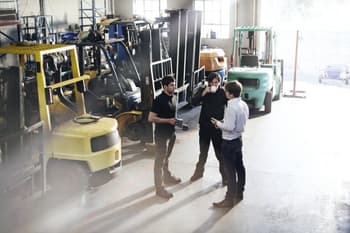Table of Contents
- What Are You Required to Do Under the Covenant of Repair and Maintenance?
- Has the Covenant Been Implied in the Law?
- What Should Your Repair and Maintenance Clause Cover?
- What Are Your Landlord’s Repair and Maintenance Obligations?
- Are Structural Repairs Excluded From Your Obligations?
- Are Inherent Defects Excluded From Your Obligations?
- Key Takeaways
As a tenant, you may have encountered a covenant in your lease. A covenant is an agreement between the parties of the lease. Within a lease, some covenants are considered to be implied. One crucial implied lease covenant is the obligation to conduct “good and substantial repair” of the premises. This article explains the meaning of the implied covenant of repair and maintenance and its impact on your responsibilities as a tenant.
What Are You Required to Do Under the Covenant of Repair and Maintenance?
As a tenant, you have an implied covenant to keep the premises in “good and substantial repair”. Similarly, upon lease termination, you are required to return them under the same conditions. However, landlords often exclude this implied covenant within the lease agreement, preferring more detailed and express obligations on the tenant.
Ultimately, clear obligations and well-defined standards for commercial property repair and maintenance minimise the risk of disputes and misunderstandings.
Has the Covenant Been Implied in the Law?
In every Australian state (except the ACT), tenants have an implied obligation to repair the leased premises. For example, in New South Wales, the Conveyancing Act 1919 states that tenants must maintain the premises in good repair. The law considers the premises’ condition at the lease’s commencement and excludes reasonable wear and tear.
Continue reading this article below the formWhat Should Your Repair and Maintenance Clause Cover?
Given the fundamental nature of the implied covenant, your landlord may specify additional express obligations in your lease, including:
- regular equipment maintenance;
- obligations to enter a cleaning contract;
- regular cleaning of carpets;
- specific redecoration obligations; and
- regular waste removal.
In addition to these, as a tenant, you should make sure that the lease incorporates relevant market-standard exceptions, such as that:
- structural and inherent defect repairs should be expressly excluded from your responsibility;
- your landlord should have an obligation for aspects of the premises you are not responsible for;
- you should not be responsible for repairing fair wear and tear; and
- you should not have to handle repairs for destruction or damage that is not your responsibility, such as fire, explosion, storm, or flood. Your landlord’s insurance should cover these instances.
What Are Your Landlord’s Repair and Maintenance Obligations?
As a tenant, you are not guaranteed by statute that the landlord must ensure the premises are legally or physically suitable for you. Additionally, it is not expected that the premises should be in a reasonable state of repair at the beginning of the lease. Therefore, you must conduct due diligence at the start of the lease to verify its suitability. This involves conducting enquiries at the premises, as well as with the council.
Additionally, you should make sure that the lease includes explicit obligations on the landlord regarding repair and maintenance, such as:
- if the premises are not suitable, both parties agree that the landlord is responsible for specific work or addressing specific issues.
- requiring your landlord to carry out “urgent” repairs without unnecessary delay. You should ensure that the time limits for such requirements are outlined; and
- outlining responsibilities concerning necessary facilities like central air-conditioning and elevators.
Are Structural Repairs Excluded From Your Obligations?
You have responsibilities for repairs and maintenance as a tenant under the lease. However, it is essential to clarify that structural repairs to the leased premises are the landlord’s responsibility. Therefore, you should ensure that your repair and maintenance obligations explicitly exclude any structural maintenance. Consider adding a specific carve-out or exclusion for structural repairs in order to avoid any confusion.

This guide will help you to understand your options when you purchase a business with leased premises.
Are Inherent Defects Excluded From Your Obligations?
You should be aware that, in addition to handling structural repairs, the landlord is responsible for addressing inherent defects in the premises. These defects may arise from:
- defective preparation (or remediation of the site, including foundations);
- defective design;
- defective supervision of the construction;
- defective workmanship; and
- defective materials.
Where the inherent defect does not have an impact on your use or the stability of the building, the landlord will not generally be obligated to repair the inherent defect. However, it remains that this is the landlord’s responsibility.
It is essential to perform due diligence before signing a lease to identify any significant defects that may impact your use of the premises. This will allow you to discuss these defects with the landlord. Additionally, it is crucial to clarify the condition of the premises at the commencement to ensure the landlord does not require you to rectify issues not caused by you.
Key Takeaways
Prior to entering a commercial lease, you should be clear about the repair and maintenance obligations upon both you, the tenant, and your landlord. The law has implied some of these obligations. However, to reduce the likelihood of disputes and ensure clear specification of exclusions, you should clearly define both parties’ responsibilities within your lease.
If you have any questions or need assistance entering into a lease, our specialist leasing lawyers can assist you as part of our LegalVision membership. For a low monthly fee, you will have unlimited access to lawyers to answer your questions and draft and review your documents. Call us today on 1300 544 755 or visit our membership page.
We appreciate your feedback – your submission has been successfully received.











